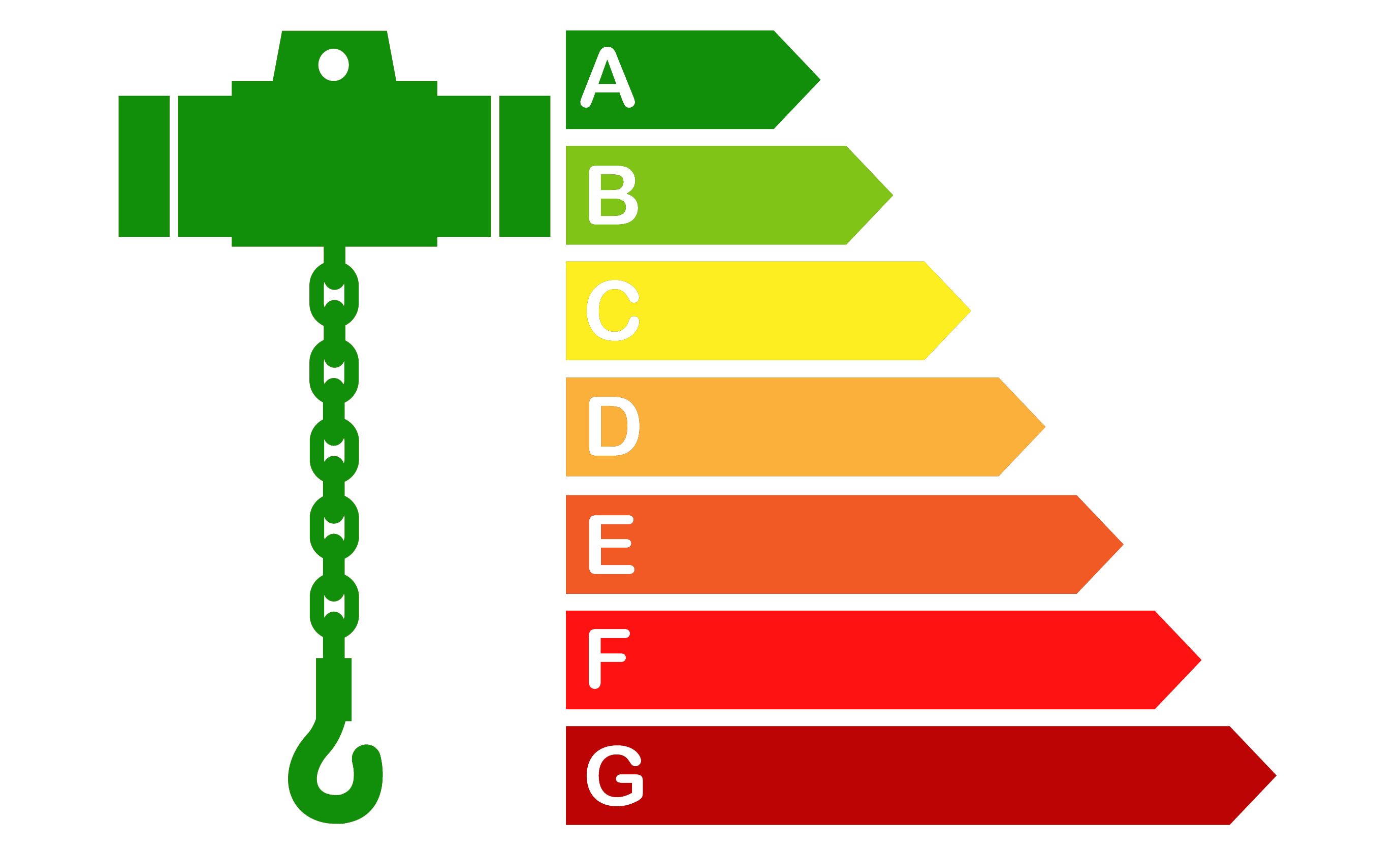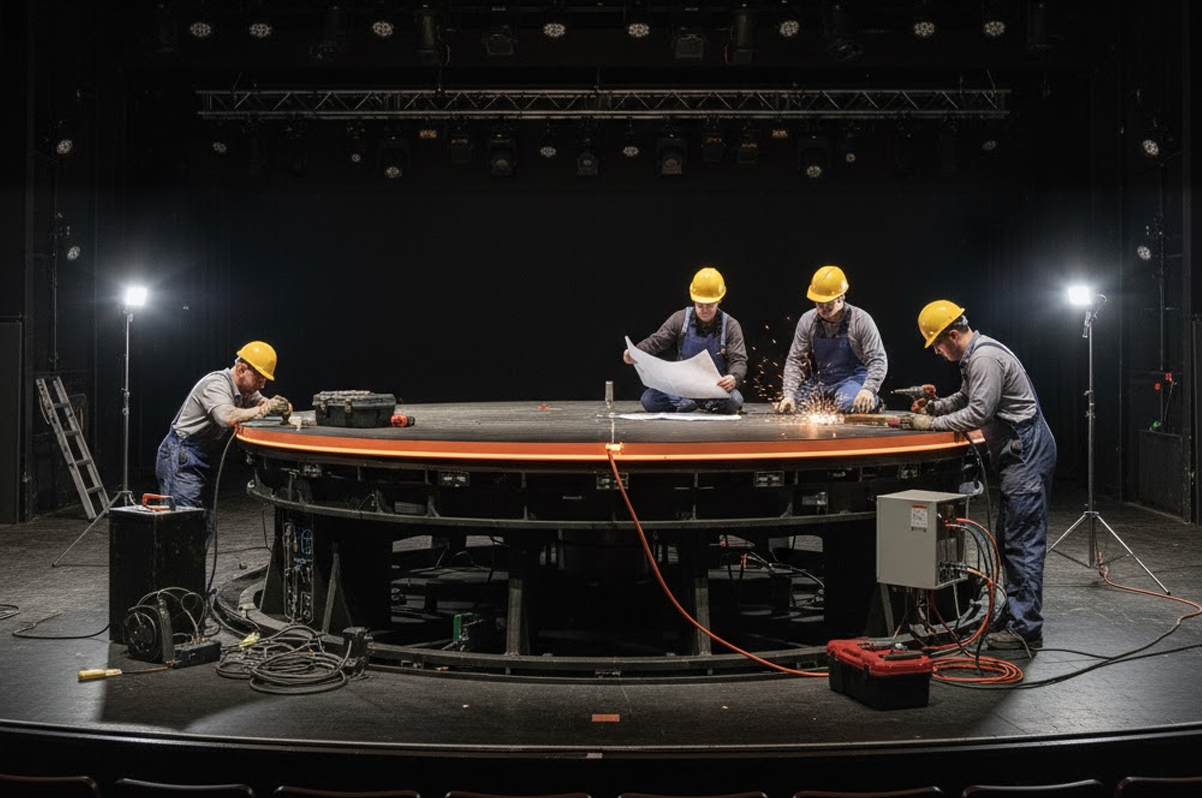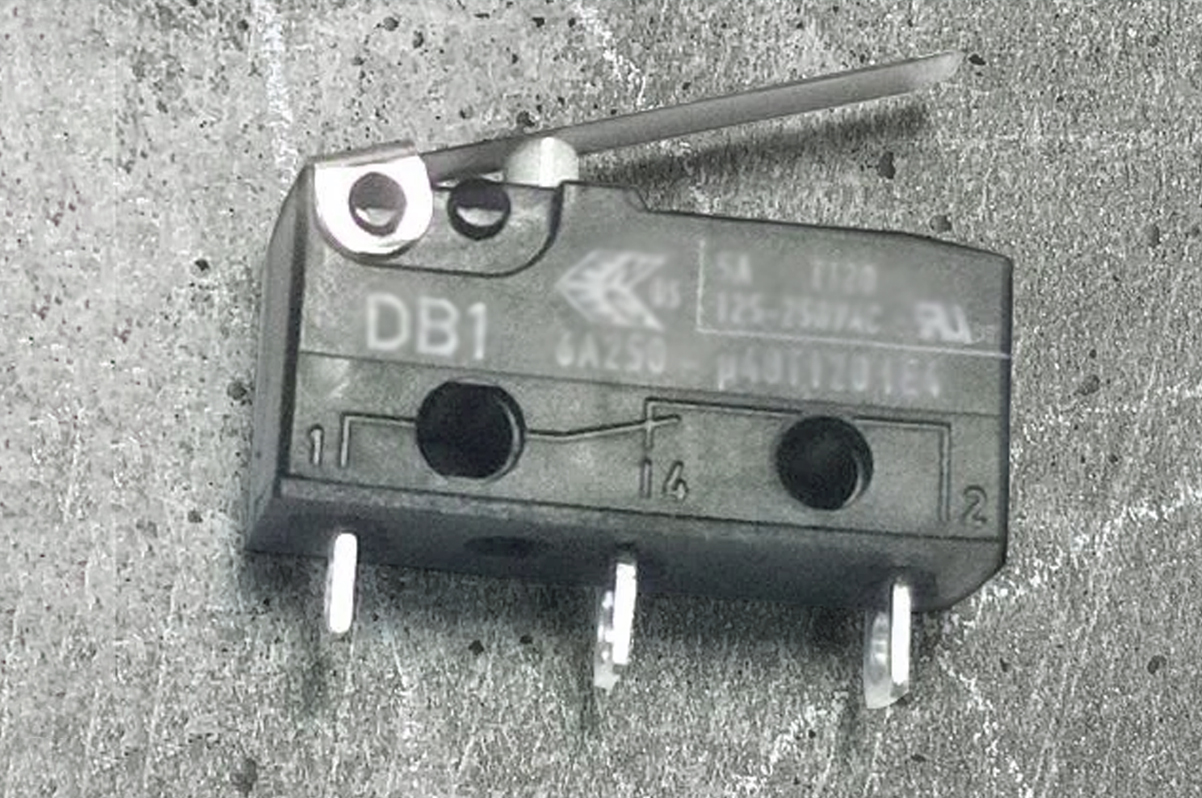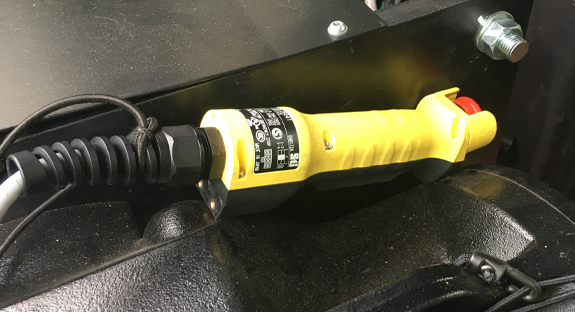In our previous article, we established “Planet B” doesn’t exist, which is why Blumano aims to help manufacturers comply with EU environmental laws and reduce every cost possible for event productions.
We’ve divided the “A Little Effort to Save the Show” series into three parts:
- Production and Waste (read here)
- Power Consumption
– Proper Switching
– Standby Indicators
– Repurpose and Reuse - Control System Efficiency
Proper Switching
Have you ever wondered how an inverter can guarantee no power is delivered to a motor; without switching any mechanical relays or contacts? All variable-speed inverter units have devices called TRIACs to ensure that the power to the motor is regulated and switched off when required.
When a switching device is used for safety purposes, it’s often called a STO or Safe Torque Off. The STO switching device acts as a contactor would do and removes power from the motor when the device’s power is taken away. However, a crucial difference exists between the safety relay and safety TRIAC, which the latter cannot remain engaged if there’s a mechanical failure since there are no mechanical parts.
One would be surprised to hear that over 70% of failures in safety relays and contactors will keep them permanently engaged, which means that approximately in three out of every four times a contactor fails, it keeps delivering power to the motor. Also, this is the reason why we often require redundancy. Ensuring that if one contactor or relay fails, the other can switch off the machine.
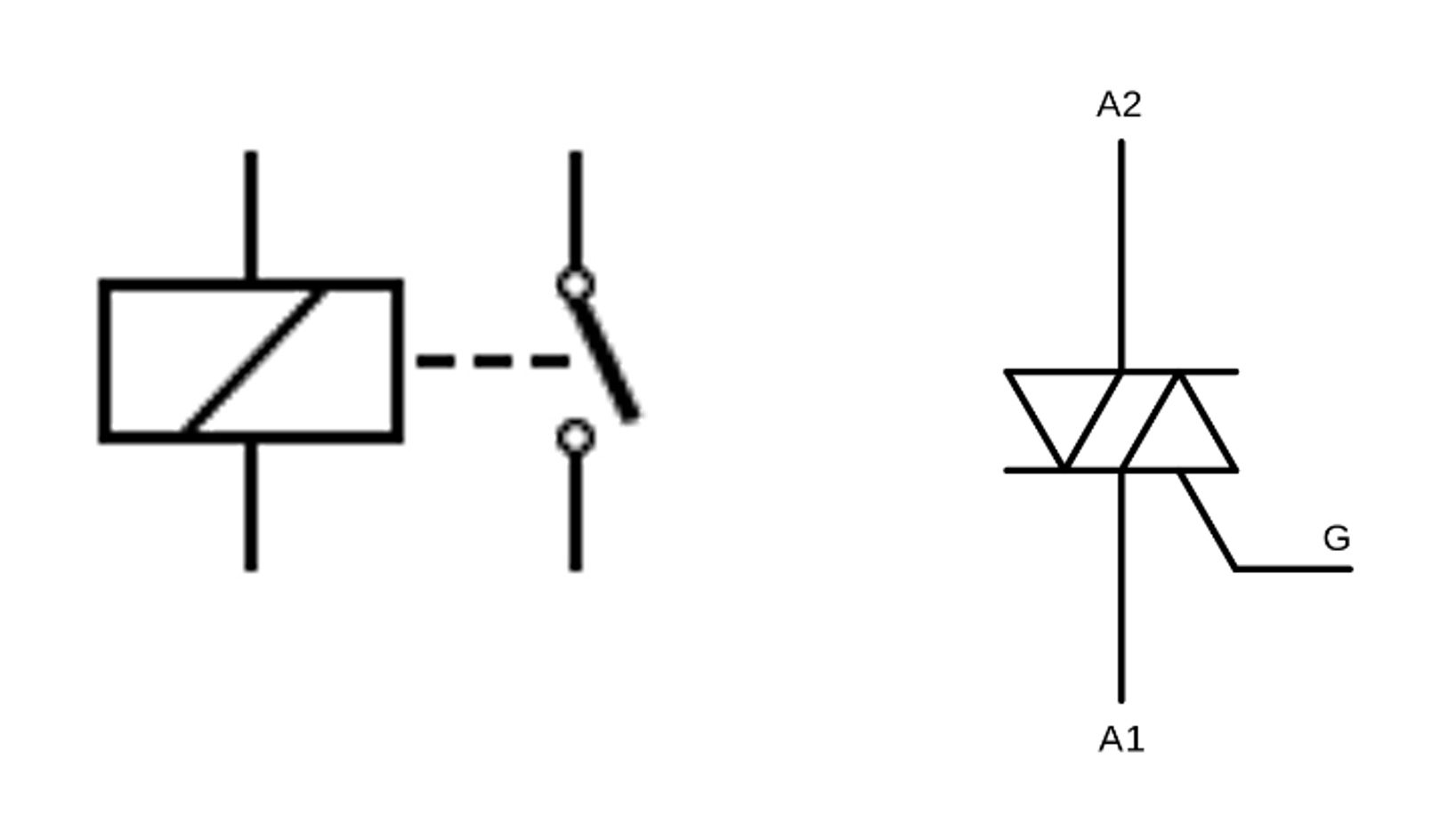
Figure 1: Relay (left) and TRIAC (right)
On the other hand, TRIACs don’t require a redundant circuit because the device is unable to mechanically lock or close itself. They have a high reliability rate, and their dangerous failure rate is much lower. Additionally on the circuit side, their power consumption is much lower since they don’t require power for coil circuits and don’t require redundant partners.
Why doesn’t the industry use TRIACs? There are two main reasons: first the technology is newer, and the price tag is higher, and the second reason is the energy loss on the power side is much greater. And a one-for-one replacement would not deliver any power savings but quite the opposite.
TRIACs used to power E-STOP circuits will consume about four times more than a single contactor as they are required to stay permanently engaged for large periods of time. Yet, given that large amounts of machinery in the event industry are fixed speed hoists—which usually remain in standby—the idea of having a large power supply permanently engaged or large contactors switched on in case of an E-STOP event is not the right way forwards. Event industry manufacturers must minimise power consumption when their machinery is not in use and change the way controllers are designed to introduce newer technologies that allow for faster/unlimited switching and have a low standby power consumption.
It is a failure to keep contactors permanently engaged 24/7 if the machinery is not in use.
Manufacturers should declare their machine’s power consumption along with the standby power consumption. The user should calculate how much it would cost them to keep the equipment plugged in but not in use, and the carbon footprint the equipment would represent for their business. This standby consumption could be huge for fixed installations where equipment is rarely unplugged from the socket. Using the smallest and most efficient power supply, removing all contactors, and having a TRIAC for every motor might increase the power when it’s in use, but it will dramatically decrease the power very closely to zero when not in use. Representing large energy savings for the user, increasing safety, and reducing maintenance and repairs.
Standby Indicators
This is an old mantra of electronic devices. Indicators—LEDs and displays—are very useful to understand if a machine is powered, if there is a fault, or to mark a particular state. Even so, these indicators can’t be observed by humans 99.99% of the time and could become annoying if the event requires total darkness.
Often looking up in a venue, you can see the glare of hundreds of LEDs just sitting there doing nothing.
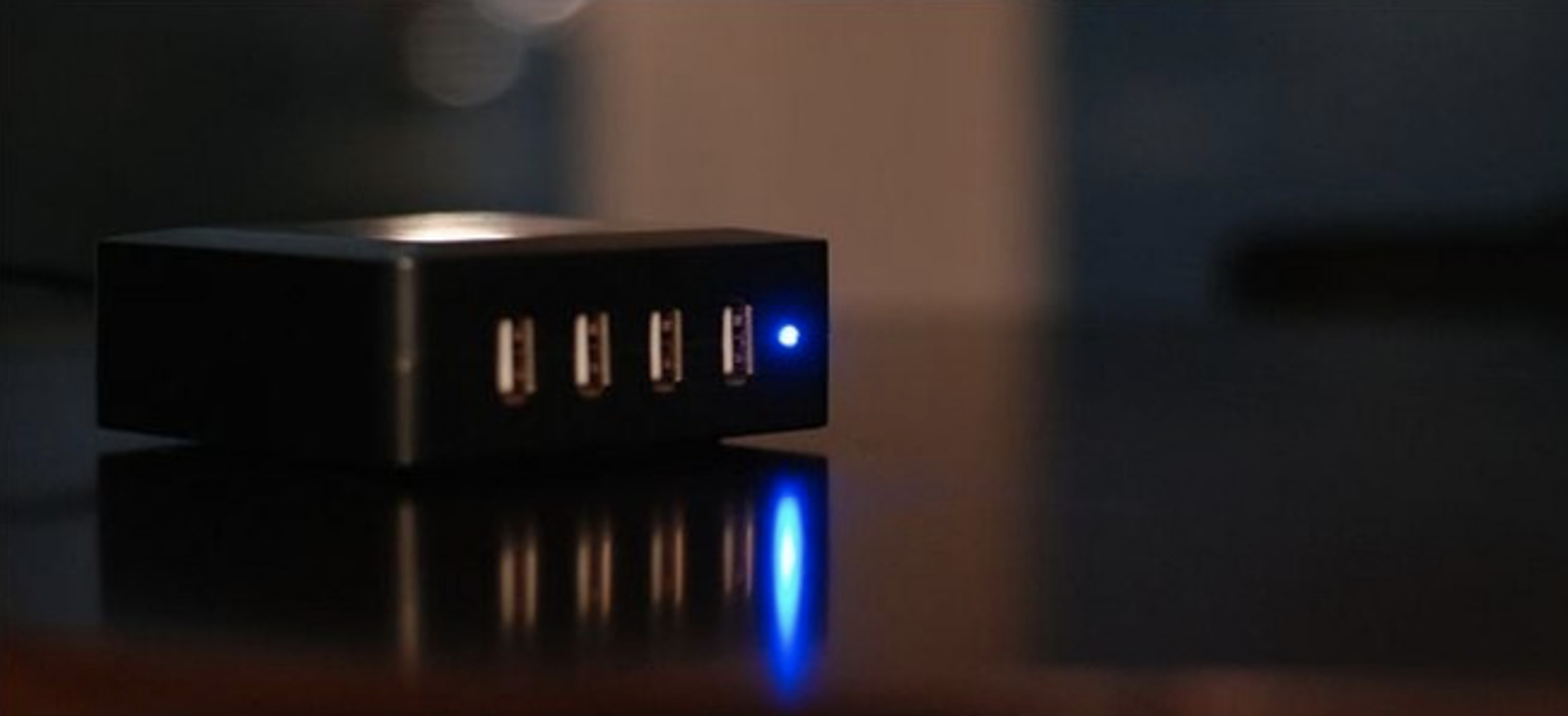
Figure 2: Standby/Power Indicator
Shouldn’t we include a single small switch or push button that shuts down the power to all displays and indicators when they’re not needed? Switching them off will increase their lifespan and will help reduce power consumption when no one is watching. There are many ways to solve this issue, but it’s up to the manufacturer to place a minimum number of LEDs and provide a way to switch the indicators off, so the buyer can ask for the feature and users can use it.
Repurpose and Reuse
Optimised energy consumption is the best way to ensure that everything produced has a purpose. This is of the upmost importance in fixed installations, where often the machinery is slightly customised to the venue’s requirements.
It’s not ideal to enter a controller room full of cabinets and feel the aircon unit blasting air inside the room just because the electronic equipment cannot dissipate the heat in such small space. This is a failure of the design.
The energy wasted when cooling a cabinet room is huge.
When equipment is permanently installed in a room, and it’s required from an external device—which has not been designed for this purpose—to run properly, it means the designer hasn’t considered the dissipation capabilities, or the ambient temperatures of the space where it’s installed. There is no need to “cool” the room, but there is a need to keep the temperature of the cabinets stable and within an allowable range. The heat-producing parts of the cabinet should be placed together and remain thermally isolated within the cabinet. A targeted aircon conduit or cooling circuit will also help reduce the temperature of these components to an acceptable range.
Nonetheless, the main target should be to reduce the heat that is generated in the first place. There are many solutions at our disposal, for example, by using a common DC bus for large amounts of variable-speed drives, so the current generated when braking can be reused, and sent back into the common bus for the other axis to use. Manufacturers can also try to place the braking resistors in an area that will naturally have a lot of ventilation, or an area that will usually require heating. User requirement specifications can be adjusted to reduce requirements for deceleration rates, or maximum loads for machinery to be designed without the need for braking resistors.
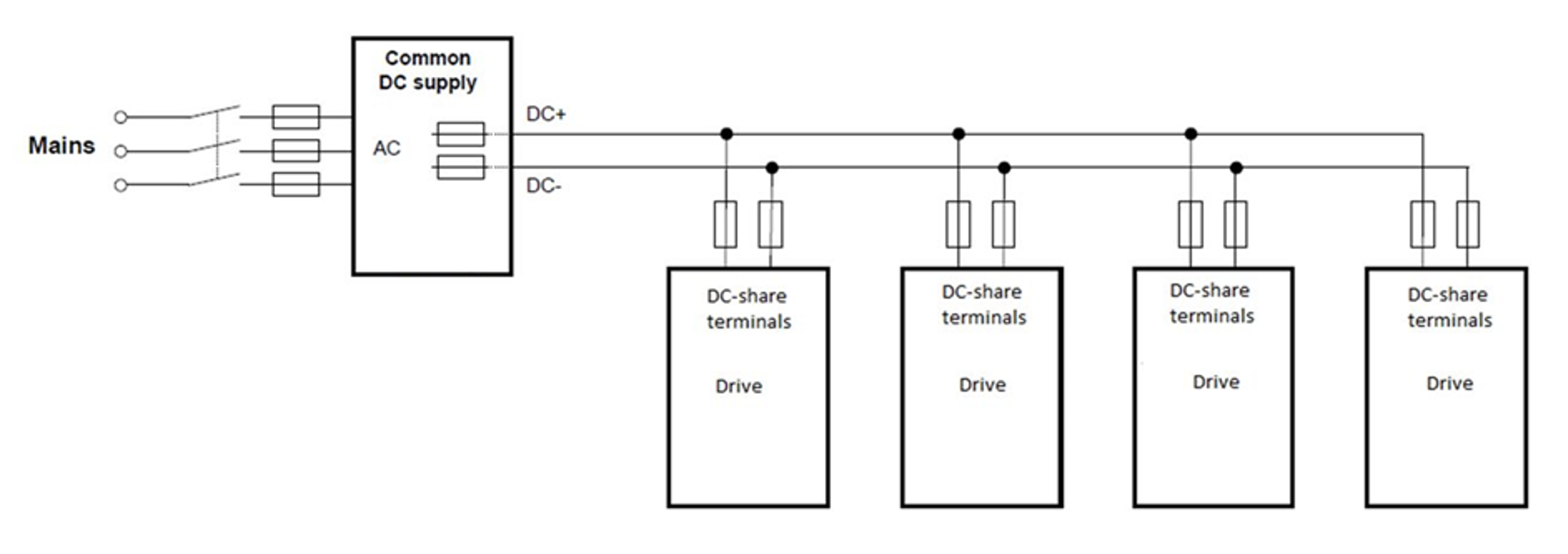
Figure 3: Common DC Bus System
At last, it’s worth exploring manufacturers of new inverters units—bidirectional—that for large machinery can put energy back into the grid instead of dissipating the energy as heat onto the braking resistor.
Overall, we should prime the optimisation of power consumption during standby times, remove or switch off unnecessary indicators, and try to place components in a way that will reuse or redirect the power generated when braking.
Consumers should demand equipment that is energy efficient, both for our planet and their own pockets.
